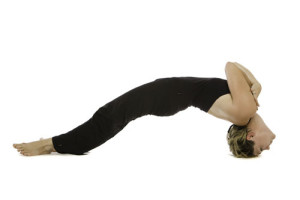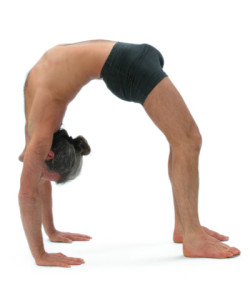 We all know about injuries when it comes to Ashtanga yoga. Maybe you’ve been injured yourself, or you know someone who has. Or you’ve seen countless blog posts, articles and interviews about what causes them, how they manifest and how to prevent them reoccurring.
We all know about injuries when it comes to Ashtanga yoga. Maybe you’ve been injured yourself, or you know someone who has. Or you’ve seen countless blog posts, articles and interviews about what causes them, how they manifest and how to prevent them reoccurring.
I’m very happy to say that I’ve never been injured during my 6 years of daily practice (unless I’ve just jinxed that…!), so I feel like one of the lucky ones. Actually, I don’t believe luck has much to do with it and have my own theories as to why people get injured. But let’s save that for another day…
That’s not to say the practice hasn’t taken its toll on my body in other ways, though. Yes, I’ve had the usual aches and pains and, particularly during my first year or so, I experienced some rather excruciating pains. But I later realised these were all just part of the process. They were “opening” pains rather than serious injuries, as my body was opening and transforming with the practice.
But that’s not the only way my body has been affected by my daily practice. And I know others have experienced some of the same things. But all bodies are different so I’m intrigued to know what physical ailments other Ashtangis have suffered from too. OK, they might be a little embarrassing, but come on, we’re all human!
So, here are my top 5 symptoms for Dr Ashtangi:
1. Setu Bandhasana scalp
 I seem to have developed a very dry, flaky patch of scalp right at the front of the top of my head. I swear it must be from Setu Bandhasana because it’s in exactly the right place. And if you think about all that weight going almost onto your forehead, as you roll into and out of the posture, I guess it must be pretty intense on my poor delicate scalp.
I seem to have developed a very dry, flaky patch of scalp right at the front of the top of my head. I swear it must be from Setu Bandhasana because it’s in exactly the right place. And if you think about all that weight going almost onto your forehead, as you roll into and out of the posture, I guess it must be pretty intense on my poor delicate scalp.
2. Supta Konasana heel calluses
You know, the one where you’re holding your toes as you roll up from a wide-legged Halasana and come crashing down on the floor in front of you. Err, I mean, lower gracefully to the ground in a controlled manner, using your calf muscles for cushioning. Well, however much you engage your calves, it’s almost impossible not to let the backs of your heels make some sort of impact with the (usually hard, wooden) floor. So those calluses quickly develop and I doubt they’ll be going anywhere anytime soon.
3. Backbending headaches
 A few years ago I went through a phase of feeling dizzy every time I stood up from asanas like Ardha Baddha Padmottanasana. My teacher at the time thought I might be lacking in magnesium so I started taking a supplement. But that gave me heart palpitations! So I just put it down to the hazards of the practice and it soon went away. Now I seem to get brief but intense headaches every now and then. After my 3 attempts at Kapotasana, followed by 3 Urdhva Dhanurasanas, followed by 3 drop backs and assisted halfbacks, I creak and groan my way into Paschimattanasana, then strongly engage my bandhas as I’m pressed heavily forward. My breathing slowly softens and lengthens, but when I eventually lift my head, there it is. That pounding little reminder of the intensity of what I’ve just put my body through. Oh and then there’s the backbending tears of course, but again, let’s save those for another day…
A few years ago I went through a phase of feeling dizzy every time I stood up from asanas like Ardha Baddha Padmottanasana. My teacher at the time thought I might be lacking in magnesium so I started taking a supplement. But that gave me heart palpitations! So I just put it down to the hazards of the practice and it soon went away. Now I seem to get brief but intense headaches every now and then. After my 3 attempts at Kapotasana, followed by 3 Urdhva Dhanurasanas, followed by 3 drop backs and assisted halfbacks, I creak and groan my way into Paschimattanasana, then strongly engage my bandhas as I’m pressed heavily forward. My breathing slowly softens and lengthens, but when I eventually lift my head, there it is. That pounding little reminder of the intensity of what I’ve just put my body through. Oh and then there’s the backbending tears of course, but again, let’s save those for another day…
4. Sarvangasana dry patch
I don’t actually suffer from this one myself but I know lots of people who do. It’s that little patch of weird, dry skin right on the spine, somewhere around the join between the cervical and thoracic vertebrae. And my theory is that it’s from Salamba Sarvangasana, i.e. shoulder stand. Well, all that pressure’s got to manifest somewhere, right?
5. Garbha Pindasana spinal bruising
Again, not one I’ve particularly had myself. But it’s hardly surprising that rolling around on your spine, attempting to do a complete 360 in only 5 moves, whilst remaining controlled and graceful (but actually looking like an upturned cockroach desperately trying to right itself), with only a thin yoga mat for cushioning, might produce a little bruising around said spine area. Ouch!
– Hannah
What about you?
Have you experienced any of these physical ailments? Or perhaps you have others you’d like to share? I can guarantee someone else will have experienced them too. And nothing’s too embarrassing for Dr Ashtangi’s clinic!

Hi Hannah! Great article, and good to point out these things, some of which I most commonly noticed around Ashtangis already… I didn’t experience 1 and 3 at all but would like to add on some things that might be helpful (?). On 2) Supta Konasana heel calluses: happened only in the very beginning to me till I found a technique that works 100% as long as your hamstrings are flexible enough: When rolling up stretching your legs out, instead of focusing on engaging the calve muscles, REALLY PULL on your big toes back towards your body and really push the heel forward and stretch the leg. If you maintain this intense toe-pull-back the calves will land as a cushion first, no matter how hard you fall (requires flexible hamstrings though)… let me know if that helps! Just don’t top pulling 😉
Regarding 4) Sarvangasana it’s hard to do but I find it prevents a little from having your weight on C7 (this vertebrae on which the bruise appears then) if you slide back your head a little (only 5-10mm) to create space at this area and not “stand” on it..
well and for Garbha P. I found it most helpful at first to replace bras with fastening on the back with sportsbras who you just slip into without fastening anywhere so no hard metallic stuff on the spine when rolling… Also I roll a slightly on the side of the spine (down right, up left) to not roll on the vertebraes… Well.. just some thoughts from my side…
BUT: there actually is one other thing I created… Developing callused skin on top (! not on the sole) of my big toe joints… Ideas anyone or is that ashtangi symptom as well? Maybe transitioning from Chaturanga into Upward Dog?
Lovely greetings to you! Claudia
Hi Claudia, thanks for your reply and useful suggestions. I discovered the same thing with Supta Konasana and it’s so satisfying when you land quietly on your bouncy cushioned calf muscles instead of crashing onto your hard heels! It requires a very focussed attention each time though I find. I haven’t heard of the calloused skin on top of the big toe joints before, but yes I’m sure that could be to do with rolling over the toes – such an unnatural thing for us to be doing in the first place! Lovely greetings back to you, hope you’re well, Hannah x
Wow! Been practicing for 14 years and never had any of these problems (some others, but not these).
Lucky you Stephan! Although I’m glad to hear you have had some issues at least – I don’t think it’s fair if anyone escapes completely unscathed! 😉
Thanks for commenting Stephan. I’m intrigued… Care to share some of your own challenges with the practice over the years?
A great post Hannah. I’ve certainly experienced 1, 2, 4 and 5! I found that number 4 can be alleviated by drawing the chin away from the chest, lengthening the back of the neck. Joey Miles also showed me a great tip for the two following postures halasana and karnapidasana which is to draw the shoulder blades towards each other and shuffle onto the shoulders, giving some extra height so that the neck is not actually on the mat.
Claudia’s advice on Supta K is good but it takes some courage to master this and as a man with skinny little calves its a tricky one. Certainly the last thing you want to do is bend the legs! I found using my stomach muscles to control my descent helps, but again it can take years to develop this strength.
Like yourself I went through a dizzy spell. I experienced this particularly strongly in it prasarita padotonasana for several months and it gradually went away over a period of 6 months.
In Mysore I developed a bad case of tears underneath both my big toes – I put this down to a lack of fabric conditioner when washing my cotton mat. I had to tape both toes up in order to allow this to heal up. I pretty much had my toes taped up most days practicing at the shala. Fortunately the tape is cheap!
Claudia, I’ve also had callouses on the tops of my big toes during the first couple of years of practice. I really can’t say when or how this went away.
Thanks for sharing your experiences Guy – it’s reassuring to know we’re all going through similar issues and that there are plenty of suggestions out there for overcoming them.